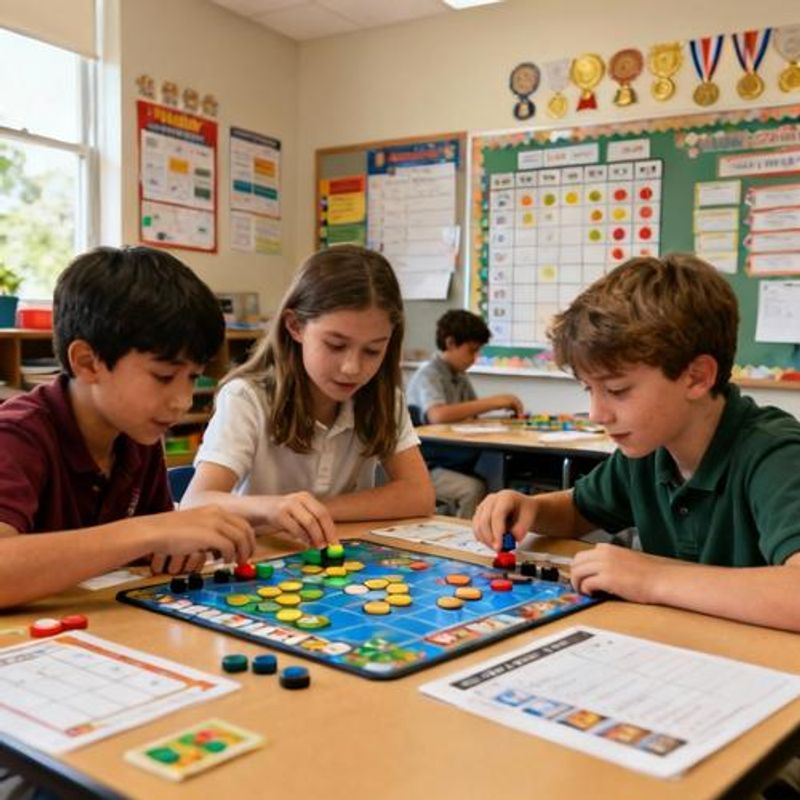What is the Role of Games and Education in Modern Learning? A Complete Guide for Educational Leaders

As an educational leader, you're constantly seeking innovative ways to enhance student engagement while meeting learning objectives. The integration of games and education has emerged as a powerful solution that addresses declining student motivation, improves knowledge retention, and develops critical 21st-century skills. This comprehensive guide will help you understand how educational gaming can transform your institution's learning outcomes and provide you with practical strategies for successful implementation.

The Current Challenge: Why Traditional Learning Methods Fall Short
Educational administrators today face unprecedented challenges. Student attention spans continue to decrease, engagement levels drop significantly in traditional lecture-based environments, and assessment results often fail to reflect students' true potential. Research indicates that passive learning methods result in only 10% retention rates after two weeks, while interactive methods can increase retention to 90%. For educational leaders managing diverse student populations, the pressure to improve outcomes while working within budget constraints has never been greater. Games and education represent a strategic solution that addresses these pain points by leveraging students' natural affinity for interactive, goal-oriented activities.
Key Insights: What Educational Gaming Delivers
Educational gaming transforms learning through several core mechanisms that directly impact institutional success metrics:
- Increased engagement rates by 60-70% compared to traditional methods
- Immediate feedback loops that accelerate learning and reduce teacher workload
- Adaptive learning paths that accommodate diverse learning styles and paces
- Comprehensive analytics providing actionable insights into student progress
- Development of critical thinking, collaboration, and problem-solving skills

Understanding Educational Gaming: Core Components and Types
Educational gaming encompasses three primary categories that serve different institutional needs. Digital game-based learning utilizes purpose-built educational software that aligns with curriculum standards while providing immersive experiences. Gamification applies game mechanics like points, badges, and leaderboards to traditional learning activities, making routine tasks more engaging. Simulation-based learning creates safe environments where students can practice complex scenarios without real-world consequences. Each approach offers distinct advantages: digital games provide scalable, consistent experiences; gamification enhances existing curricula without major overhauls; simulations develop practical skills in risk-free environments. The key is selecting the right combination based on your institution's specific learning objectives, student demographics, and available resources.
Implementation Framework: From Planning to Execution
Successful integration of games and education requires a systematic approach. Begin with a comprehensive needs assessment identifying specific learning gaps and student engagement challenges. Establish clear success metrics including academic performance indicators, engagement rates, and completion times. Select educational gaming solutions that align with your curriculum standards and provide robust analytics capabilities. Develop a phased implementation plan starting with pilot programs in select classrooms or subjects. Provide comprehensive teacher training focusing on both technical skills and pedagogical strategies. Create feedback loops involving students, teachers, and administrators to continuously refine your approach. Budget considerations should include initial licensing costs, hardware requirements, ongoing support, and professional development expenses.
Practical Examples: Educational Gaming in Action
Mathematics instruction benefits significantly from adaptive learning games that adjust difficulty based on student performance, providing personalized challenge levels while building confidence. Language arts programs utilize storytelling games where students create narratives, developing writing skills while exploring grammar and vocabulary in context. Science education leverages virtual laboratories allowing students to conduct experiments safely while learning proper procedures and scientific methodology. Social studies classes employ historical simulation games where students assume roles in different time periods, gaining deeper understanding of cause-and-effect relationships. Assessment integration occurs through embedded evaluation systems that track progress in real-time, providing teachers with immediate insights into student comprehension and skill development.

Common Implementation Challenges and Solutions
Educational leaders often encounter resistance from teachers concerned about technology integration or time constraints. Address this by providing adequate training time and demonstrating how games actually reduce grading workload through automated assessment features. Budget limitations can be managed by starting with free or low-cost platforms and gradually scaling based on demonstrated results. Technical challenges require establishing reliable IT support and ensuring robust internet infrastructure. Parent and community skepticism about 'playing games' in school can be addressed through transparent communication about learning objectives and sharing concrete academic improvement data. Avoid the common mistake of choosing games based solely on entertainment value rather than educational alignment. Ensure games complement rather than replace fundamental teaching practices, and maintain balance between digital and traditional learning methods.
Next Steps: Building Your Educational Gaming Strategy
The integration of games and education represents a proven strategy for improving student outcomes while addressing modern learning challenges. Start by conducting a pilot program in one subject area or grade level to demonstrate value and build institutional support. Engage your teaching staff in the selection process to ensure buy-in and identify champions who can lead implementation efforts. Establish measurement systems to track both academic performance and engagement metrics, providing concrete evidence of impact. Consider partnering with other educational institutions to share resources and best practices. The future of education increasingly depends on innovative approaches that meet students where they are while preparing them for an evolving world. Educational gaming provides the tools to achieve both objectives effectively, positioning your institution as a leader in modern pedagogy while delivering measurable improvements in student success.